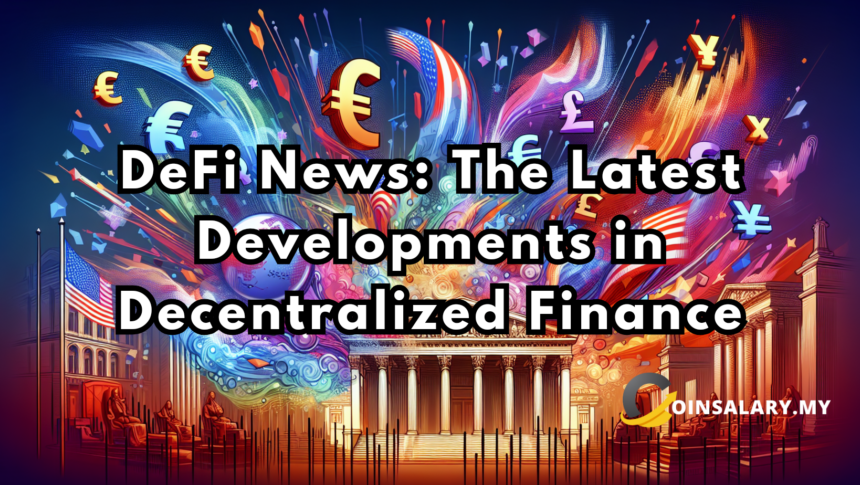Decentralized Finance, or DeFi, has been one of the most transformative innovations in the cryptocurrency space, offering a new way to access financial services without traditional intermediaries like banks. Powered by blockchain technology, DeFi platforms provide decentralized alternatives to lending, borrowing, trading, and even earning interest. As the sector continues to evolve, several key developments are shaping the future of DeFi.
The Rise of Layer 2 Solutions
One of the most significant challenges faced by DeFi platforms is the issue of scalability. With Ethereum being the primary blockchain for most DeFi projects, high gas fees and slow transaction speeds have hindered user adoption. In response, Layer 2 solutions like Arbitrum, Optimism, and zk-rollups have emerged. These technologies aim to alleviate network congestion by processing transactions off-chain, thus reducing costs and improving efficiency.
Arbitrum and Optimism have seen a surge in adoption recently, as many popular DeFi protocols, including Uniswap and Aave, have integrated Layer 2 support. This move could mark a turning point in DeFi’s growth, making decentralized financial services more accessible to a broader audience.
Institutional Interest in DeFi
As DeFi matures, institutional investors are beginning to take notice. While early DeFi was largely dominated by retail investors and crypto enthusiasts, traditional financial institutions are exploring ways to integrate decentralized finance into their offerings.
In particular, Polygon and Aave Arc are attracting attention from institutional players. Aave Arc is a permissioned version of the popular Aave protocol, designed to comply with regulatory standards and allow institutions to participate in DeFi without compromising compliance. This development signifies a shift toward more regulated DeFi solutions, bridging the gap between traditional finance and the decentralized world.
Regulatory Challenges
With the rise of DeFi, regulators around the world are increasingly scrutinizing the sector. Unlike traditional financial systems, which operate under a clear legal framework, DeFi protocols often function without centralized control, raising questions about accountability, security, and consumer protection.
In the U.S., the Securities and Exchange Commission (SEC) has ramped up its focus on DeFi platforms, particularly those that offer lending or trading services that could be classified as securities. Meanwhile, the European Union is working on its Markets in Crypto-Assets (MiCA) regulation, which aims to establish a comprehensive legal framework for digital assets, including DeFi.
These regulatory developments could have a profound impact on the DeFi ecosystem, as compliance requirements may lead to a more centralized form of decentralized finance or stifle innovation if not carefully crafted.
The Growth of DeFi Insurance
As DeFi continues to expand, so too does the need for protection against risks like smart contract vulnerabilities, hacks, and exploits. DeFi insurance has emerged as a crucial component of the ecosystem, providing users with peace of mind as they navigate decentralized platforms.
Companies like Nexus Mutual and InsurAce offer decentralized insurance products that protect users from losses due to protocol failures or hacks. While this market is still in its infancy, the rise of DeFi insurance could help boost confidence in the sector, particularly among more risk-averse investors.
Integration with Traditional Finance
One of the most exciting trends in DeFi is its integration with traditional finance (TradFi). Projects like Compound Treasury are working to create hybrid financial products that combine the advantages of DeFi with the stability and security of traditional banking services. Compound Treasury, for example, allows institutions to earn a fixed interest rate on US dollars by leveraging Compound’s decentralized lending protocol.
These hybrid solutions could bring DeFi to a wider audience, allowing non-crypto users to benefit from the innovation of decentralized finance without directly interacting with the volatile crypto markets.
NFTs and DeFi: The Intersection
Another trend gaining traction is the intersection between DeFi and Non-Fungible Tokens (NFTs). NFTs have revolutionized digital ownership, and DeFi platforms are now exploring how these unique digital assets can be used in the world of decentralized finance. Platforms like NFTfi allow users to take out loans by using their NFTs as collateral, unlocking liquidity from illiquid assets.
The combination of NFTs and DeFi could open up new opportunities for creators, collectors, and investors, further blurring the lines between digital art, gaming, and finance.
The Road Ahead for DeFi
DeFi’s future looks bright, but it also faces several challenges. Scalability, regulatory scrutiny, and security risks remain pressing issues for the sector. However, with the ongoing development of Layer 2 solutions, growing institutional interest, and innovations like DeFi insurance, the decentralized finance ecosystem is poised for continued growth and adoption.
As DeFi evolves, it will be crucial to strike a balance between innovation and regulation, ensuring that decentralized financial services remain accessible, secure, and compliant. The coming years could see DeFi not only reshape the financial landscape but also become a vital part of the global economy.




